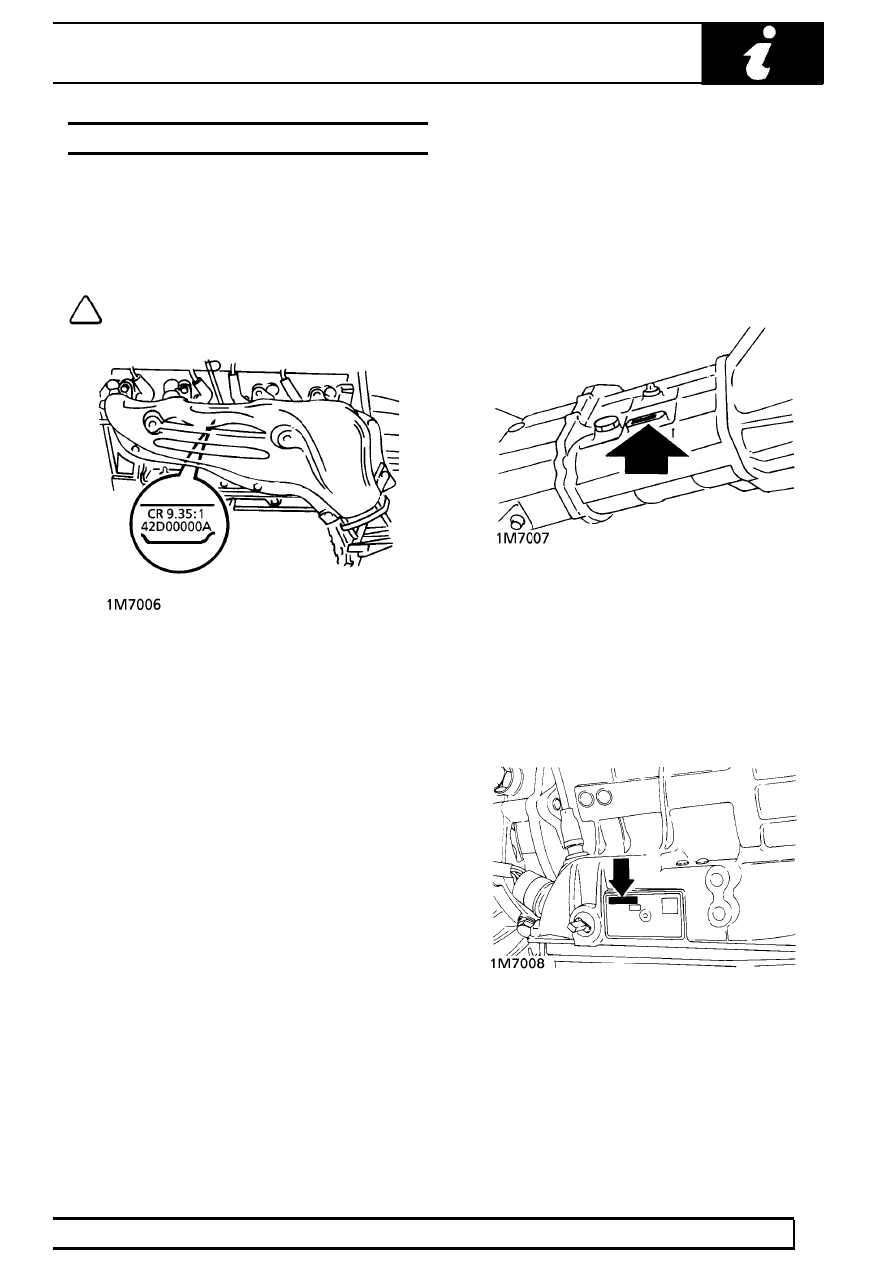Range Rover. Manual - part 4

INTRODUCTION
13
INFORMATION
LOCATION OF IDENTIFICATION NUMBERS
Engine serial number - V8 engine
Stamped on a cast pad on the cylinder block, between
numbers 3 and 5 cylinders.
NOTE: The engine compression ratio is
stamped above the serial number.
Engine serial number - BMW Diesel engine
Stamped on the LH side of the cylinder block above
the sump.
Main gearbox R380 - 5 speed
Stamped on a cast pad on the bottom right hand side
of the gearbox.
Automatic gearbox ZF4HP22/ZF4HP24
Stamped on a plate riveted to the bottom left hand
side of the gearbox casing.